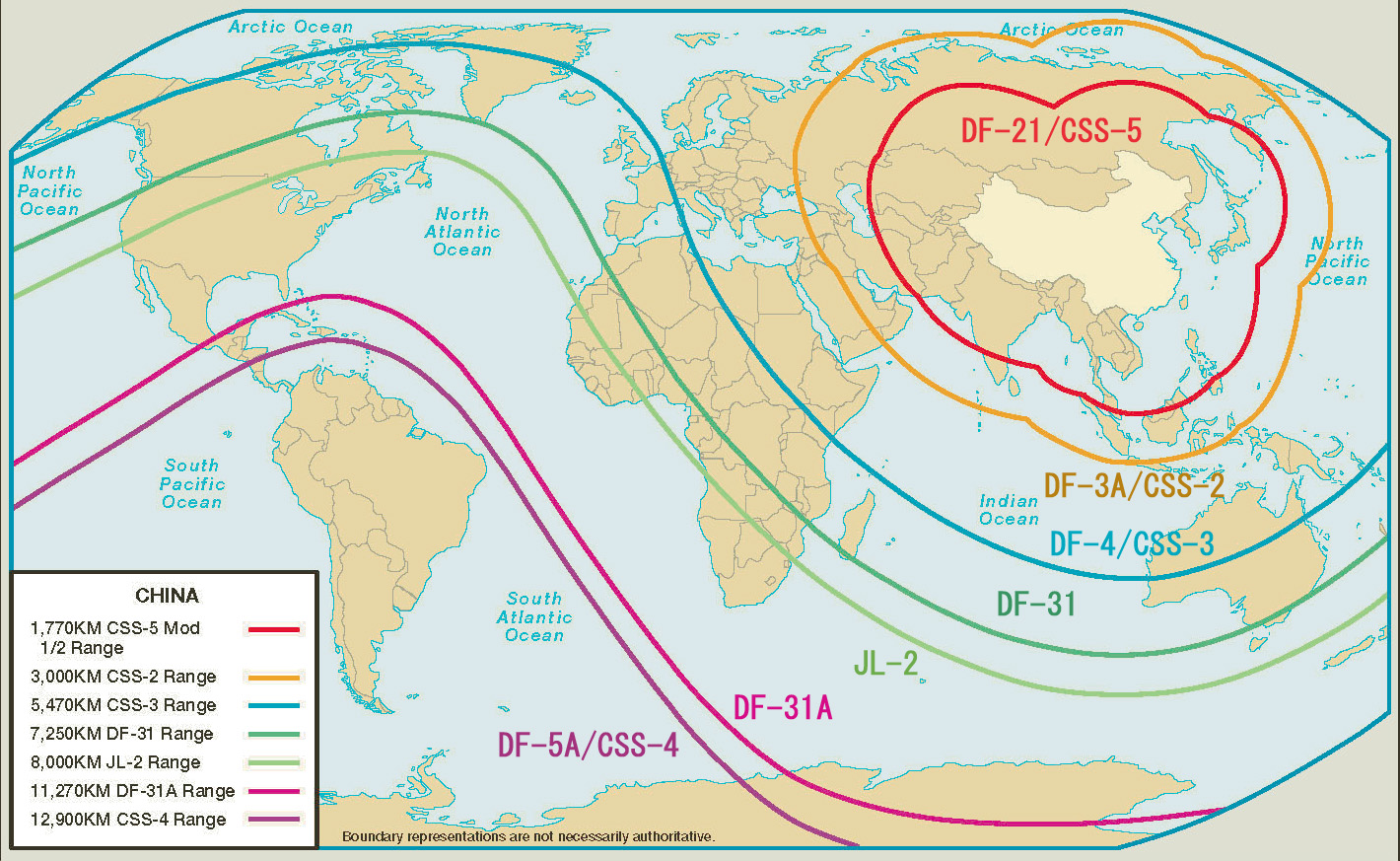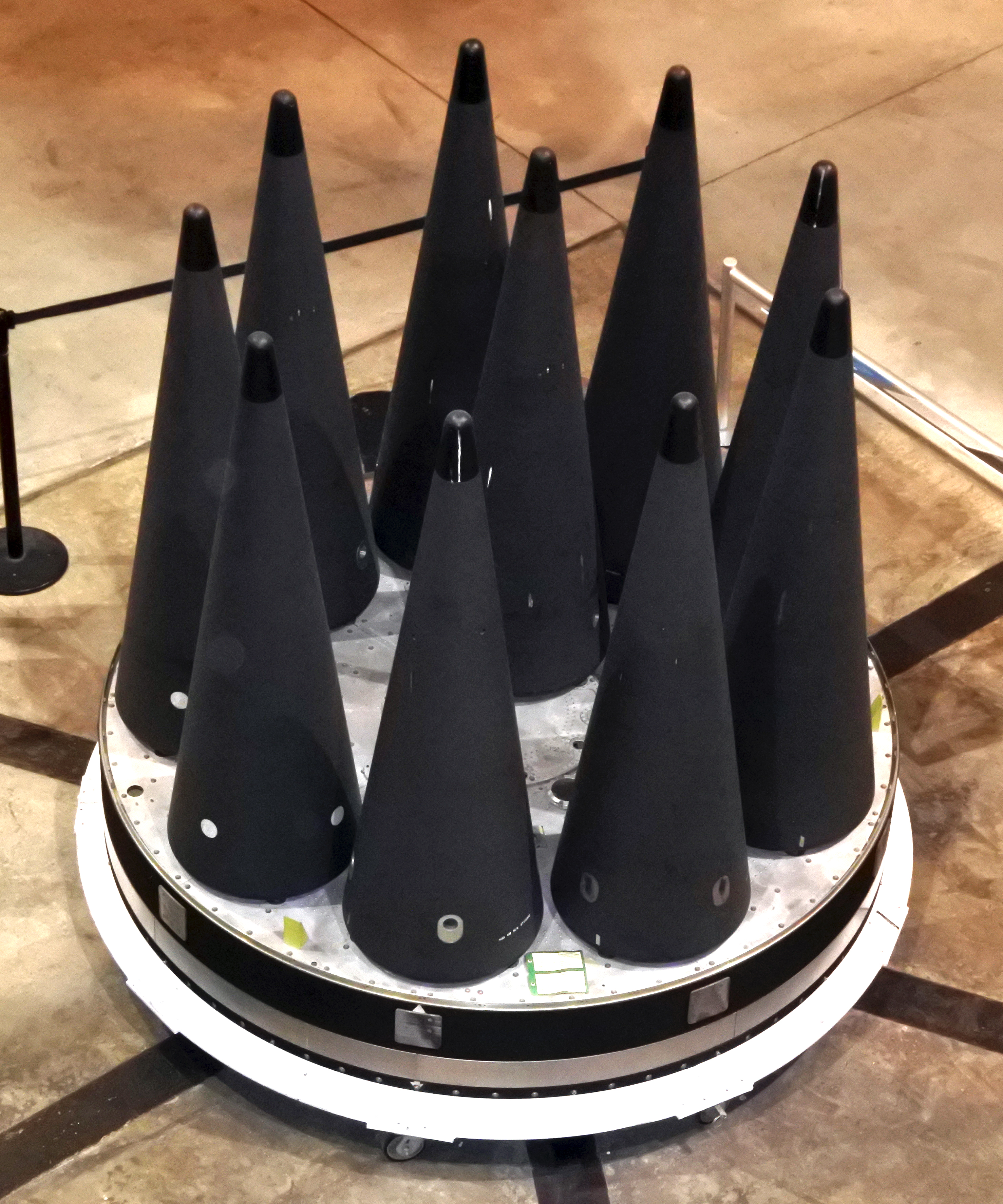|
DF-17
The Dongfeng-17 (), is a Chinese solid-fuelled road-mobile medium-range ballistic missile that mounts the DF-ZF Hypersonic Glide Vehicle. The DF-17 along with the DF-ZF, was officially unveiled at the National Day military parade on 1 October 2019, making this China's first operational hypersonic weapon systems and one of the world's first to be put in full initial operation.Henri Kenhmann (2019-10-07) DF-17 : Ce que l’on sait de cette arme hypersonique chinoise (translated, French: ''DF-17: What is known about this Chinese hypersonic weapon'') Design The DF-17 uses the rocket booster from the already operational |
DF-17 Missile 20221020
The Dongfeng-17 (), is a Chinese solid-fuelled road-mobile medium-range ballistic missile that mounts the DF-ZF Hypersonic Glide Vehicle. The DF-17 along with the DF-ZF, was officially unveiled at the National Day military parade on 1 October 2019, making this China's first operational hypersonic weapon systems and one of the world's first to be put in full initial operation.Henri Kenhmann (2019-10-07) DF-17 : Ce que l’on sait de cette arme hypersonique chinoise (translated, French: ''DF-17: What is known about this Chinese hypersonic weapon'') Design The DF-17 uses the rocket booster from the already operational[...More Info...] [...Related Items...] OR: [Wikipedia] [Google] [Baidu] |
DF-16
The ''Dongfeng'' () series, typically abbreviated as "DF missiles", are a family of short, medium, intermediate-range and intercontinental ballistic missiles operated by the Chinese People's Liberation Army Rocket Force (formerly the Second Artillery Corps). History After the signing of the Sino-Soviet Treaty of Friendship, Alliance and Mutual Assistance in 1950, the Soviet Union assisted China's military R&D with training, technical documentation, manufacturing equipment and licensed production of Soviet weapons. In the area of ballistic missiles, the Soviets transferred R-1 (SS-1), R-2 (SS-2) and R-11F technology to China.13,000 km). Currently, an estimated 24-36 DF-5A's are in service as China's primary ICBM force. If the DF-5A is launched from the eastern part of the Qinghai province, it can reach cities like Los Angeles, Sacramento and San Francisco. If it is launched from the most eastern parts of northeastern provinces, it can cover all of the mainland of the Un ... [...More Info...] [...Related Items...] OR: [Wikipedia] [Google] [Baidu] |
DF-ZF
The DF-ZF is a Chinese hypersonic glide vehicle (HGV), previously denoted by the Pentagon as WU-14 and currently officially operational on October 1st, 2019, in the 70th anniversary of the People's Republic of China. The DF-ZF is designed to be mounted on a DF-17, a type of ballistic missile specifically designed to carry HGVs. Testing The DF-ZF, designated by Pentagon as the WU-14, is a hypersonic missile delivery vehicle that has been flight-tested by China seven times, on 9 January, 7 August and 2 December 2014; 7 June and 27 November 2015; in April 2016 and twice in November 2017. The system is operational as of 2019. The Chinese Defense Ministry confirmed its January 2014 test and said the test was "scientific" in nature, although it was widely viewed as part of a broader Chinese military build-up. All seven tests China performed so far were concluded successfully according to U.S. officials cited in ''The Washington Free Beacon''. All the test launches were performed at the ... [...More Info...] [...Related Items...] OR: [Wikipedia] [Google] [Baidu] |
People's Liberation Army Rocket Force
The People's Liberation Army Rocket Force (PLARF; ), formerly the Second Artillery Corps (), is the strategic and tactical missile force of the People's Republic of China. The PLARF is the 4th branch of the People's Liberation Army (PLA) and controls China's arsenal of land-based ballistic missiles—both nuclear and conventional. The armed service branch was established on 1 July 1966 and made its first public appearance on 1 October 1984. The headquarters for operations is located at Qinghe, Beijing. The PLARF is under the direct command of the Chinese Communist Party's Central Military Commission (CMC). In total, China is estimated to be in possession of 320 nuclear warheads as of 2020, with an unknown number of them active and ready to deploy. In 2013, the United States Department of Defense estimated the Chinese active ICBM arsenal to range between 50 and 75 land and sea-based missiles. More recent intelligence assessments in 2019 put China's ICBM count at around 90 and ... [...More Info...] [...Related Items...] OR: [Wikipedia] [Google] [Baidu] |
70th Anniversary Of The People's Republic Of China
The 70th anniversary of the founding of the People's Republic of China () was observed with a series of ceremonial events including a grand military parade as its spotlight to celebrate National Day of the People's Republic of China that took place on 1 October 2019 in Beijing. It was the largest military parade and mass pageant in Chinese history. Chinese Communist Party (CCP) general secretary Xi Jinping, who was the guest of honour, gave the holiday address to the nation and Chinese expatriates before inspecting the formations along Chang'an Avenue. Premier Li Keqiang was the master of ceremonies and General Yi Xiaoguang was the chief commander of the parade. Background The CCP had defeated the Kuomintang Party following the Chinese Civil War, which occurred intermittently between 1927 and 1950 In the aftermath of the civil war, the Kuomintang and its loyalists then retreated to the island of Taiwan, formerly a prefecture of the Qing Empire, which had been unde ... [...More Info...] [...Related Items...] OR: [Wikipedia] [Google] [Baidu] |
Hypersonic Glide Vehicle
Hypersonic glide vehicle (HGV) is a type of warhead for ballistic missile that can maneuver and glide at hypersonic speed. It is used on ballistic missiles to significantly change their trajectories. Conventional ballistic missiles follow a predictable ballistic trajectory and are vulnerable to interception by the latest anti-ballistic missile (ABM) systems. HGV makes them unpredictable, allowing them to evade air defenses. Hypersonic glide vehicles are currently subject of an arm race. Countermeasures Boost-glide weapons are generally designed to avoid existing missile defense systems, either by continually maneuvering or by flying at lower altitudes to reduce warning time. This generally makes such weapons easier to intercept using defensive systems intended for lower-altitude "low-tier" targets. Flying at lower speeds than short-range ballistic missile warheads makes them easier to attack. Those that approach with very low terminal attack profiles are even subject to attack b ... [...More Info...] [...Related Items...] OR: [Wikipedia] [Google] [Baidu] |
Medium-range Ballistic Missile
A medium-range ballistic missile (MRBM) is a type of ballistic missile with medium range, this last classification depending on the standards of certain organizations. Within the U.S. Department of Defense, a medium-range missile is defined by having a maximum range of between . In modern terminology, MRBMs are part of the wider grouping of theatre ballistic missiles, which includes any ballistic missile with a range of less than . Specific MRBMs * DF-2 * DF-16 * DF-17 * DF-21 (China) , (Saudi Arabia) * SSBS S1 * Agni II * Agni-P * Ashoura * Emad * Fajr-3 (estimation) * Ghadr-110 * Khorramshahr (missile) * Sejjil * Shahab-3 * Badr-2000 * Jericho II * Hwasong-9 * Hwasong-10/RD-B Musudan * Pukkuksong-1 * Pukkuksong-2 * Pukkuksong-2 * Rodong-1 * Ababeel * Ghauri-I * Ghauri-II * Ghauri-III (Cancelled) * Shaheen-II * Shaheen-III [...More Info...] [...Related Items...] OR: [Wikipedia] [Google] [Baidu] |
MRBM
A medium-range ballistic missile (MRBM) is a type of ballistic missile with medium range, this last classification depending on the standards of certain organizations. Within the U.S. Department of Defense, a medium-range missile is defined by having a maximum range of between . In modern terminology, MRBMs are part of the wider grouping of theatre ballistic missiles, which includes any ballistic missile with a range of less than . Specific MRBMs * DF-2 * DF-16 * DF-17 * DF-21 (China) , (Saudi Arabia) * SSBS S1 * Agni II * Agni-P * Ashoura * Emad * Fajr-3 (estimation) * Ghadr-110 * Khorramshahr (missile) * Sejjil * Shahab-3 * Badr-2000 * Jericho II * Hwasong-9 * Hwasong-10/RD-B Musudan * Pukkuksong-1 * Pukkuksong-2 * Pukkuksong-2 * Rodong-1 * Ababeel * Ghauri-I * Ghauri-II * Ghauri-III (Cancelled) * Shaheen-II * Shaheen-III [...More Info...] [...Related Items...] OR: [Wikipedia] [Google] [Baidu] |
Hypersonic Weapon
Hypersonic weapons are weapons travelling at hypersonic speed – at between 5 and 25 times the speed of sound, about . Below such speeds, weapons would be characterized as subsonic or supersonic, while above such speeds, the molecules of the atmosphere disassociate into a plasma which makes control and communication difficult. Directed-energy weapons such as lasers may operate at higher speeds but are considered a different class of weaponry. There are multiple types of hypersonic weapon: # hypersonic glide vehicle : missiles which maneuver and glide through the atmosphere at high speeds after an initial ballistic launch phase # hypersonic cruise missiles: cruise missiles which use air-breathing engines such as scramjets to reach high speeds # hypersonic aircraft using air-breathing engines such as scramjets to reach high speeds # guns which fire guided projectiles. These may be developments of traditional artillery or novel technologies such as railguns. # ballist ... [...More Info...] [...Related Items...] OR: [Wikipedia] [Google] [Baidu] |
Thermonuclear Weapon
A thermonuclear weapon, fusion weapon or hydrogen bomb (H bomb) is a second-generation nuclear weapon design. Its greater sophistication affords it vastly greater destructive power than first-generation nuclear bombs, a more compact size, a lower mass, or a combination of these benefits. Characteristics of nuclear fusion reactions make possible the use of non-fissile depleted uranium as the weapon's main fuel, thus allowing more efficient use of scarce fissile material such as uranium-235 () or plutonium-239 (). The first full-scale thermonuclear test was carried out by the United States in 1952; the concept has since been employed by most of the world's nuclear powers in the design of their weapons. Modern fusion weapons consist essentially of two main components: a nuclear fission primary stage (fueled by or ) and a separate nuclear fusion secondary stage containing thermonuclear fuel: the heavy hydrogen isotopes deuterium and tritium, or in modern weapons lithium d ... [...More Info...] [...Related Items...] OR: [Wikipedia] [Google] [Baidu] |
MIRV
A multiple independently targetable reentry vehicle (MIRV) is an exoatmospheric ballistic missile payload containing several warheads, each capable of being aimed to hit a different target. The concept is almost invariably associated with intercontinental ballistic missiles carrying thermonuclear warheads, even if not strictly being limited to them. By contrast, a unitary warhead is a single warhead on a single missile. An intermediate case is the multiple reentry vehicle (MRV) missile which carries several warheads which are dispersed but not individually aimed. Only the United States, the United Kingdom, France, Russia, China and India are currently confirmed to have deployed MIRV missile systems. Pakistan is developing MIRV missile systems. Israel is suspected to possess or be in the process of developing MIRVs. The first true MIRV design was the Minuteman III, first successfully tested in 1968 and introduced into actual use in 1970. The Minuteman III held three sm ... [...More Info...] [...Related Items...] OR: [Wikipedia] [Google] [Baidu] |
House Armed Services Committee
The U.S. House Committee on Armed Services, commonly known as the House Armed Services Committee or HASC, is a standing committee of the United States House of Representatives. It is responsible for funding and oversight of the Department of Defense (DoD) and the United States Armed Forces The United States Armed Forces are the military forces of the United States. The armed forces consists of six service branches: the Army, Marine Corps, Navy, Air Force, Space Force, and Coast Guard. The president of the United States is ..., as well as substantial portions of the Department of Energy. Its regular legislative product is the National Defense Authorization Act, which has been passed by Congress and signed into law each year since 1962. Jurisdiction The Armed Services Committee has jurisdiction over defense policy generally, ongoing military operations, the organization and reform of the Department of Defense and Department of Energy, counter-drug programs, acquisit ... [...More Info...] [...Related Items...] OR: [Wikipedia] [Google] [Baidu] |



_(cropped).jpg)
